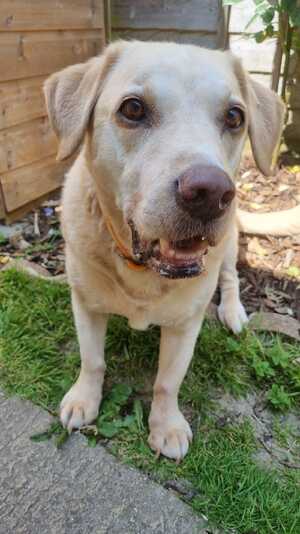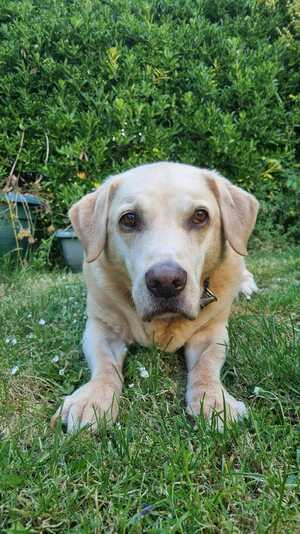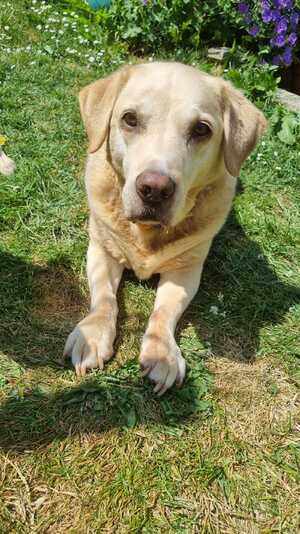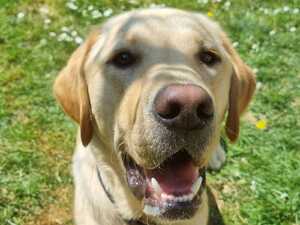How to take great pet portrait photos for artist references
- Try and make it a fun experience for both you and your pet - plenty of treats for all involved!
- Take a few shots at different times of day to see which you prefer, colours will change considerably.
- Lots of natural light is key!
- Take some shots for different angles
- Check the edges of your picture. Make sure nothing is getting cut off that shouldn't be.
- The most important parts to have in focus are the nose and eyes - if one or other is blurry, take a step back.
- If you can help it, don't use zoom on your phone camera, instead get close enough to the subject at 1 x Zoom
They don't need to be professional photographer quality, but there are a few things to bear in mind when it comes to photographing animals in a way that will help your chosen artist create a gorgeous pet portrait commission for you to treasure. Although I'll be using my dogs as an example, the advice is generic and applies to other pets, too.
Make it fun
The most important element of any portrait is portraying something of the subject's personality. Animals are amazing and can pick up on our emotions really easily so grab your camera of choice, some treats (for both your pet and for you), make it a game, and snap away until you get some shots that you're happy with.
If your pet is camera shy, you can still follow these tips on stealth mode.
Lighting and colours
Lighting, lighting, lighting. This is so important, that I'm even putting it above composition. Light changes everything and to demonstrate, here are three photos of my model Digby who, thankfully, despite being thirteen, pretty deaf, and deeply passionate about nap time - will still do anything for a morsel of cheese. All of the images in this blog were taken using my Samsung S21 smartphone.
The first is taken around 12pm on a sunny day in June. We're outdoors where it's bright, but not in direct sunlight.
The second is taken on the same day during sunset's golden hour.
The third is taken indoors at nighttime with 'the big light' on.



I'm not saying that you need to make sure your photos are taken during golden hour, but be mindful that the time of day you take your photos may alter what the colours look like a little, so if you're not getting the results you want it might be worth trying at different times of day.
In the first image, the midday light is much harsher. The difference it subtle, but it gives stronger shadows and a little more fur definition in contrast to the softer evening light of the second. Colour-wise, it's more pink.
Also, you know what colour your dog is, but if you're sending photos to an artist all taken in different lights, it would be worth clarifying with them which looks closest to your dog's natural colouring to avoid any disappointment with the final piece. In Digby's examples above, picture number three is more like his natural colouring, but picture number two is the pose that reflects his personality better these days - so if I was commissioning an artist I would send all of the above and say exactly that!
Bonus tip, if the sun is shining make sure it isn't behind you - otherwise all of your pictures will look like this. In this instance, the model closed his eyes of his own accord, no sun was involved.

Composition and angles
When you're taking your pictures, think about what your camera is seeing. The difference between these two examples of Sunny is subtle, but one is looking up his nostrils, and the other is a little more straight-on. Neither is 'wrong', but you might find that one angle looks more like your dog than another - again, it's a thing to experiment with.
Make sure both ears are visible, and that there's some space all the way around your pet's head and neck.
If you're looking for a full body portrait to be done, try and make sure you don't accidentally cut off paws and tail.


Getting the right bits in focus
The above two examples are also great for talking about focus. If you look at the one on the right, Sunny's nose and mouth are pin sharp, but the bridge of his nose and his eyes are in softer focus. If you find this is happening to you too, take a small shuffle back and keep doing so until both are in focus.
This would make it harder for an artist to replicate, because it's true what they say - the eyes really are the windows to the soul, and getting those right is absolutely imperative for a successful portrait. The eyes are what takes a piece from a really nice picture of a spaniel, to a gorgeous picture of their spaniel. Which is why it's important that they're in focus, and not in shadow, being able to see the colours and reflections makes all the difference.
What if you can't get these photos?
Whether you're looking for a memorial portrait or you're unable to take new photos for any other reason, please don't worry. All of the above advice is simply to get the best pictures in the here and now, most artists will still be more than happy to talk through what you're looking for, and which pictures you already have for reference.
Posted by Katie Gillingham on June 5th 2023
